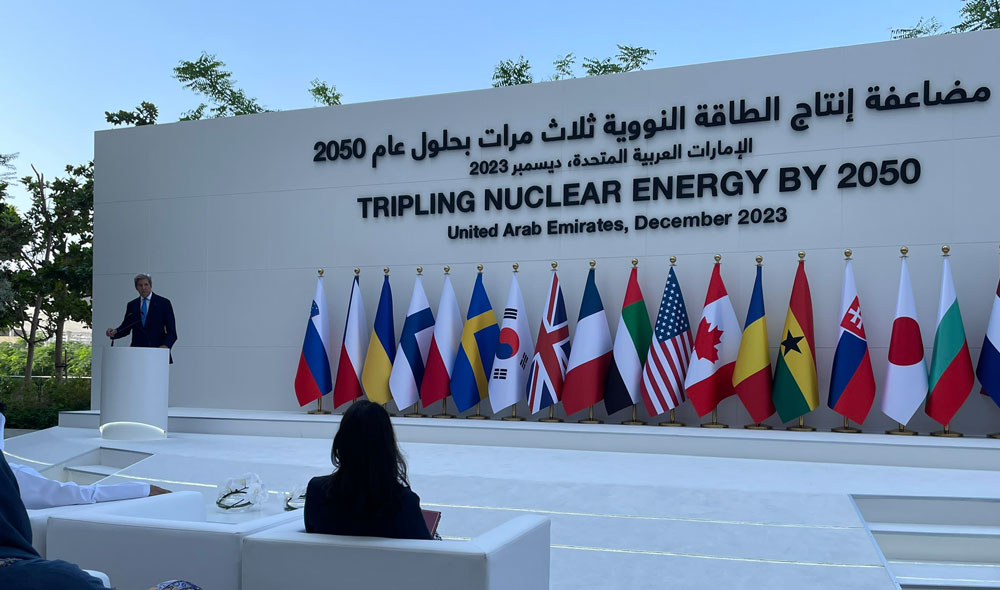At the UN’s Climate Change Conference (COP28) held in Dubai, 22 nations made a momentous commitment to triple their nuclear generation capacity by 2050. This pledge, signed on December 2, includes major countries such as the United States, Canada, Japan, France, the United Kingdom, and the United Arab Emirates. Recognizing the vital role of nuclear energy in achieving global net-zero greenhouse gas emissions and maintaining the 1.5-degree Celsius goal, these countries aim to drive the transition towards cleaner and more sustainable power generation.
Current Nuclear Capacity and the Declaration
According to the International Atomic Energy Agency, the global nuclear capacity stood at 375 GW in 2020. The Declaration to Triple Nuclear Energy acknowledges the importance of nuclear power and its potential in meeting the emission reduction targets. The signatories commit to supporting the development and construction of nuclear reactors, including small modular reactors (SMRs) and advanced reactors. Additionally, they emphasize the broader industrial applications of nuclear energy, such as hydrogen and synthetic fuels production, for decarbonization purposes.
Support and Collaboration
The participating countries are dedicated to encouraging international and regional development banks, including the World Bank, to incorporate nuclear energy into their lending policies for energy projects. They also express their commitment to extending the lifetimes of existing reactors and providing support to responsible nations seeking to deploy new civil nuclear generation. Furthermore, the signatories call upon other countries to join this declaration and plan to review the progress annually during COP meetings.
Global Nuclear Capacity Forecast
Analysts at S&P Global Commodity Insights forecast that global nuclear capacity will grow by 58% by 2050. They project that the total installed nuclear capacity, which was approximately 375 GW in 2020, will reach 458 GW by 2030, 549 GW by 2040, and 631 GW by 2050. Notably, China and the United States are expected to account for over half of the global nuclear capacity by 2050.
Challenges and Opportunities
While the pledge to triple nuclear generation capacity is a significant step towards achieving carbon neutrality, challenges remain. The construction and commissioning of new reactors must occur at a faster rate to meet the ambitious goal of net-zero greenhouse gas emissions by 2050. The World Nuclear Association highlights the need for a tripling of nuclear capacity worldwide. However, the association welcomes the recent additions of new reactors, including those in China, Finland, Pakistan, South Korea, and the United Arab Emirates.











